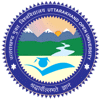|
Ch 1: Technology Framework in e-Learning
- 1.1: Introduction
- 1.2: Technology Analysis
- 1.3: Appropriate Technology
|
|
Ch 2: Learners Profile Analyze
- 2.1: Resources Availability At Learner's End
- 2.2: Selection of Technology To Match Resources
- 2.3: Meeting Objectives
|
|
Ch 3: Available Tools & Technologies for Delivering e-Content
- 3.1: Approaches for delivering e-Content.
- 3.2: Multimedia Learning Resources.
- 3.3: Technologies in Textual Deliveries.
- 3.4: Audio Technologies & Tools
- A) Audio File Formats
- B) Compression Techniques
- C) Audacity Audio Tool
- 3.5: Video Technologies & Tools
- A) File Formats
- B) Compression techniques
- C) Techniques by Easynow
|
|
Ch 4: Structuring & Presenting e-Content
- 4.1: Structuring content based on pedagogical concepts
- 4.2: Presenting content in different output formats
- 4.3: Authoring tools to create and manage content
- 4.4: Comparing eLML to other markup languages
- 4.5: Usability and marketing studies
|
|
Back To Course 5
|
|
Chapter 3.1 - Technology Framework in e-Learning
1. Introduction
Technology can be a great addition to the classroom and becoming the backbone of the modern world and a key element of the international economy. Businesses, governments, community organizations and individuals, seemingly everywhere, are looking to technology as a key to accomplish their goals.
Technology enabled the development of higher order thinking skills when students work in collaborative groups while using computers to solve problems or are taught to apply the process of problem-solving and then apply technology in the development of solutions. Higher order thinking by students involves the transformation of information and ideas. This transformation occurs when students combine facts and ideas and synthesize, generate, explain, theorize or arrive at some conclusion or interpretation.
Technology is most powerful when used as a tool for problem solving, conceptual development and critical thinking. Using technology as a tool, one can spend time productively creating strategies for solving complex problems and developing a deep understanding of the subject matter. Apparently, technology plays a key role in developing constructive publications that would effectively translate the ideas of the learner.
Next
|
|
